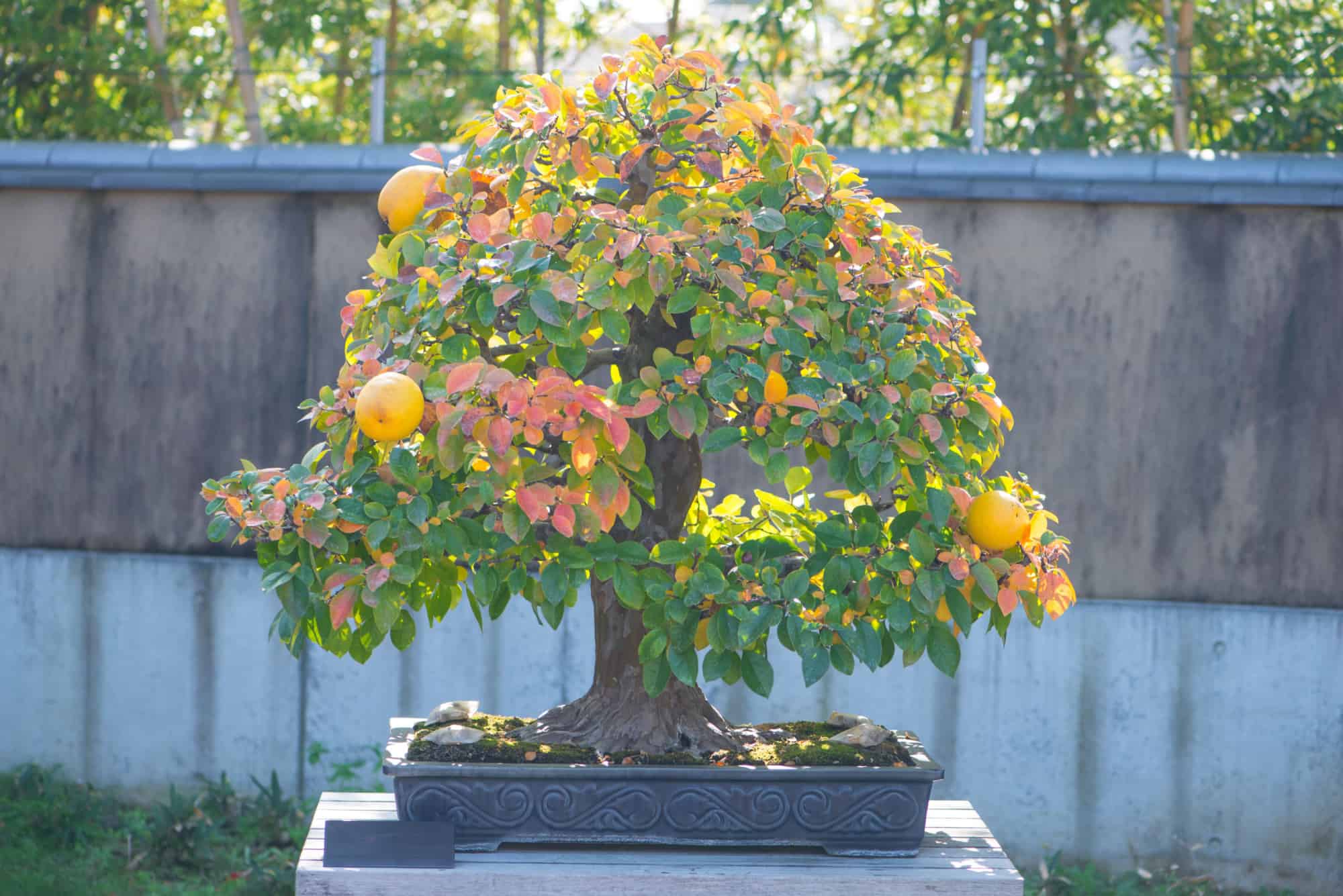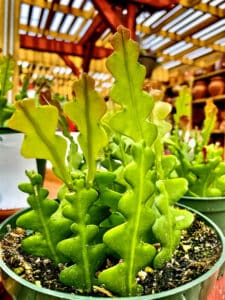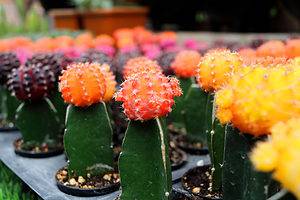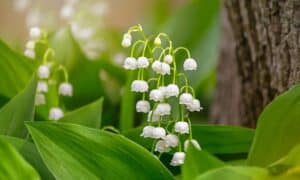If you are just starting to get into the bonsai art form, the quince bonsai tree is a great place to start. The quince is ideally suited for bigger size bonsai trees because of its huge, oval, glossy dark green leaves and coarse branches. The pink blooms and enormous, smooth-skinned, round, brilliant yellow fruits of this species develop in the spring. Although the quince bonsai tree’s fruits may be used to make jam or jelly, they lack a lot of flavor.
When the trunk and branches of the quince bonsai start to thicken, the smooth and dark-brown bark begins to peel off in patches. This exposes the lighter patches underneath, which gives the tree a very eye-catching look. The leaves of this species turn orange and crimson in the autumn and then fall.
To put it simply, there are so many beautiful attributes to the quince bonsai tree! In this guide, we will explore everything you need to know about the quince bonsai tree and how to care for your very own specimen.
Quick Information on Quince Bonsai Trees
| Quince Bonsai Tree Facts | |
|---|---|
| Botanical Name | Chaenomeles speciosa |
| Other Names | Chaenomeles, Chinese Quince |
| Sunlight | Full sun, but can survive in partial sun. |
| Soil | Standard soil with loam and peat that is slightly acidic or neutral. |
| Water | Rootballs should always be kept moist. |
| For Beginners? | Yes. |
| Indoors or Outdoors? | Both. |
| Pairs Well With… | Rock formations, trinkets, wood decor or pots. |
Common Types of Quince Bonsai Trees
Quince bonsai trees are a fantastic selection among bonsai aficionados because of their gorgeous blossoms, colorful foliage, and overall hardiness. There are several quince bonsai tree varieties, each with special qualities of their own.
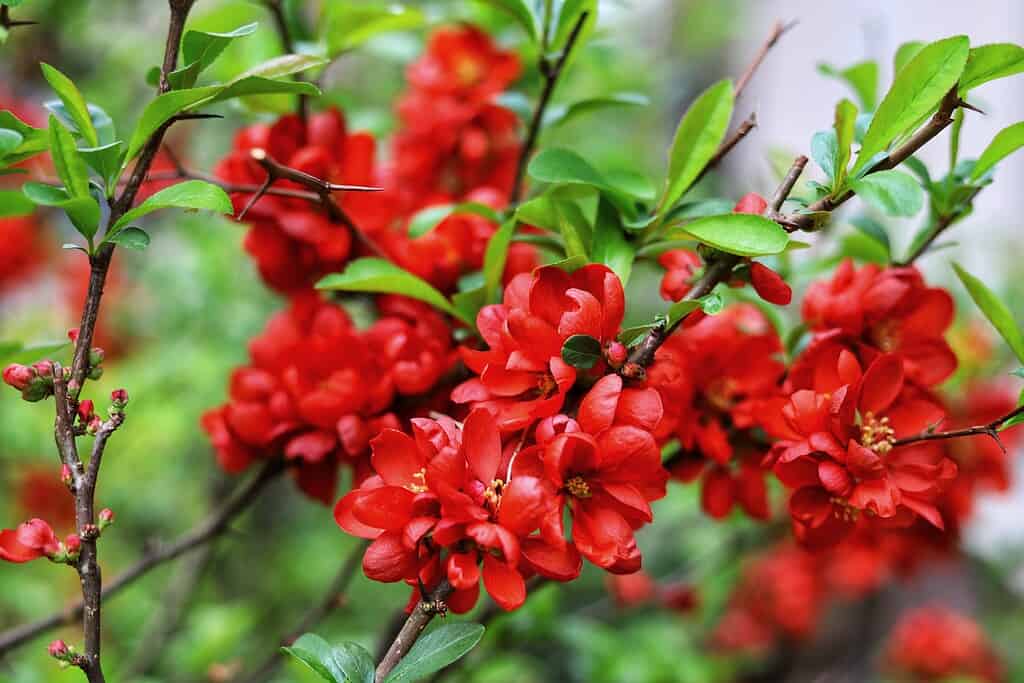
The flowers of the quince bonsai tree are usually red (pictured) or pink, depending on the variety.
©Kabar/Shutterstock.com
Cameo Quince Bonsai
Large, salmon-pink blooms that emerge in the first few weeks of spring are a distinctive feature of the Cameo quince bonsai tree. This bonsai tree normally bears tiny, greenish-yellow fruit in the fall, and its foliage is a deep green.
Texas Scarlet Quince Bonsai
Bright scarlet-red blossoms of this quince bonsai tree variety bloom in late winter or early spring. Glossy green foliage covers the tree. It also normally bears tiny, yellow-green fruit in the fall.
Jet Trail Quince Bonsai
The Jet Trail quince bonsai tree is a low-growing, spreading variety that blooms in the first few weeks of spring with tiny, white blossoms. The tree’s dark green foliage is generally utilized as a groundcover or to prevent erosion.
Apple Blossoms Quince Bonsai
The exquisite, light pink blooms of the Apple Blossom quince bonsai tree blossom in the early spring. This variety is particularly popular among bonsai growers and collectors. The tree normally bears tiny, greenish-yellow fruit in the fall, and its foliage is a deep green.
Toyo Nishiki Quince Bonsai
This quince bonsai tree species is renowned for its variegated foliage, which comes in a variety of colors, including green, pink, and white. The blooms normally blossom in the early spring and are crimson, pink, or white.
Contorta Quince Bonsai
The peculiar kind of quince bonsai tree known as Contorta has twisted, almost deformed-looking branches and trunks. This gives the bonsai some additional visual appeal and can transform it into a stunning collection centerpiece.
Pink Lady Quince Bonsai
Large, rich pink blossoms that emerge in the early spring define the Pink Lady quince bonsai tree. Glossy green foliage also covers the tree, which normally bears small yellow fruit in the fall.
Caring For Your Quince Bonsai Tree
Quince bonsai trees are a great option for novices since they require very little maintenance and care. This is a pretty rare thing in the bonsai world! A quince bonsai tree can flourish and provide lovely blooms and fruit for many years with the right care. The following tips can help you cultivate and manage a quince bonsai tree with ease. Just keep in mind that different quince bonsai varieties may have slightly different care needs.
Light Requirements
Full light is preferred by quince bonsai trees over partial shade. However, they can survive in partial shade. An area with at least six hours of direct sunshine every day is ideal for this type of bonsai tree. If you live somewhere hot, think about giving the tree some afternoon shade to keep it from getting burnt.
Water Requirements
Regularly water your bonsai quince tree, but be careful not to overwater it. Between waterings, let the soil dry out a bit. Make sure to thoroughly water the tree when you do so that the water gets to the roots. Avoid wetting the flowers or foliage since this might make them decay.
Soil Requirements
Quince bonsai plants require somewhat acidic, well-draining soil. Use a peat moss, perlite, and sand mixture or pre-mixed bonsai soil. Garden soil should not be used since it might compress and obstruct adequate drainage. Standard soil can be used if it is mixed with peat moss, perlite, etc.
Fertilizer Requirements
Throughout the growing season, give your quince bonsai tree regular fertilizing treatments. Use a balanced fertilizer that has the same proportions of potassium, phosphorus, and nitrogen. A fertilizer made particularly for bonsai trees can also be used. For the right dosage and frequency, always follow the directions on the fertilizer product you purchase.
Wiring Requirements
For sculpting and training your quince bonsai tree, wiring is crucial. Wiring is the process of using soft metal wire to bend and position the branches of your bonsai tree into place as it grows. To carefully bend the branches of your quince bonsai tree into the correct form, use a soft copper wire. The bark might be damaged and the flow of nutrients restricted if the branches are wired too tightly. Be gentle!
Repotting Requirements
To keep your quince bonsai tree from getting rootbound, repot it every two to three years. Use a pot that is slightly bigger than the current one and always replenish your bonsai soil mixture. Trim any surrounding roots before carefully removing the tree from its previous container and putting it in the new one. Add more soil when necessary, then thoroughly water the area.
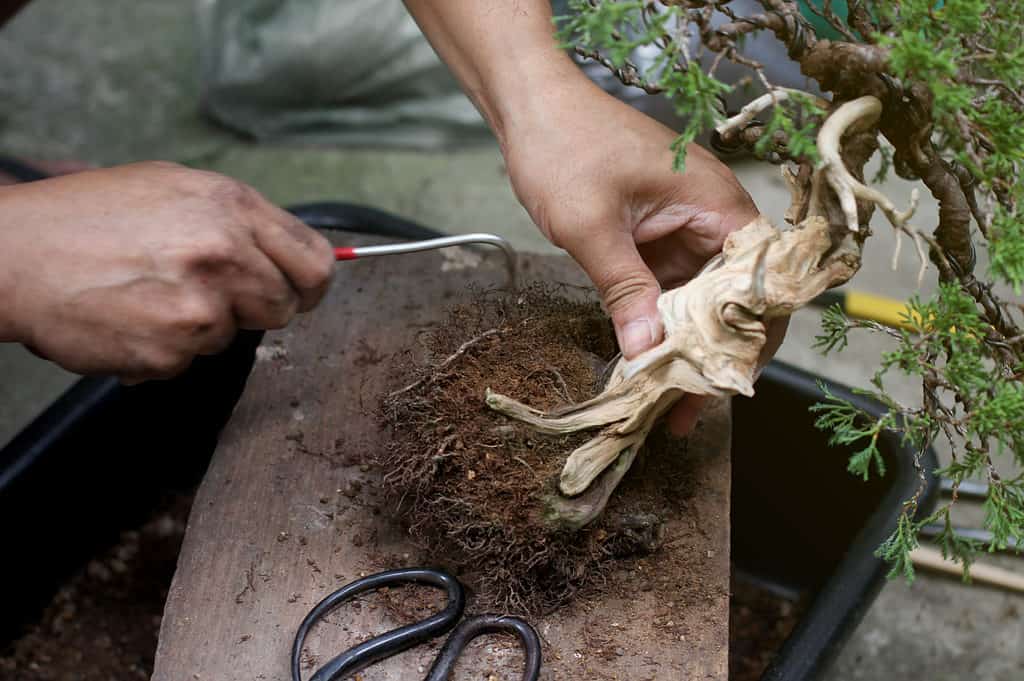
Repotting (pictured) is necessary for quince bonsai trees once they outgrow their pots, or else they could become rootbound.
©qSPOoKYp/Shutterstock.com
Pruning Your Quince Bonsai Tree
Maintaining a quince bonsai tree that is both healthy and visually beautiful requires quite a bit of pruning. In addition to promoting new growth and the health of the tree, pruning also aids in controlling the size and shape of the tree. By pruning off dead or dying parts of the tree, it can better allocate energy to living parts. To make sure you are trimming your quince bonsai tree correctly, complete the following steps.
1. Analyze the Tree
Consider the shape and structure of your quince bonsai tree from a distance before you begin trimming. Identify any branches that are touching, crossing, or growing in the incorrect direction, as well as those that are dead, injured, or afflicted. You’re looking for ways to improve the longevity of the plant along with your own aesthetic taste.
2. Gather the Correct Tools
For thinner branches, use clean, well-kept pruning shears or scissors. For bigger branches, use a saw, preferably one designed specifically for bonsai trees. Before using the tools on the tree, make sure they are clean and sharp to prevent any disease from spreading or damage.
3. Start with Dead and Sick Branches
Start by pruning away any tree branches that are unhealthy or dead. In addition to having no leaves, dead branches also tend to be dry and brittle in appearance. The leaves of diseased branches may be discolored, woolly, or show obvious symptoms of mildew or fungus. Make a precise cut with the pruning shears at the branch’s base, near the trunk.
4. Eliminate Rubbing or Crossing Branches
Next, look for any branches that are touching or crossing one another. These branches have the potential to harm one another and leave sores that allow insects and illnesses inside the tree. The smaller of the two branches or the one pointing the incorrect way should be cut off with pruning shears. Without compromising the bark, cut as closely as you can to the trunk.
5. Reduce Excessive Growth
Thin out any extra growth after you have removed any dead, diseased, or crossed branches. This will encourage new growth and preserve the tree’s form. To give the surviving branches more room and light, look for branches that are growing too thick or too close together and prune some of them. Make precise cuts with the pruning shears, leaving some leaves on each branch to aid the tree’s recovery.
6. Trim Long Branches
It’s time to trim back any long branches on your quince bonsai tree that are jutting out or taking away from the tree’s general form. Cut the branches back to a bud or node with the pruning shears, allowing enough foliage for the tree to recuperate. Reducing the tree’s size too much all at once will damage it and impede its growth. Be patient!
7. Evaluate
After pruning your quince bonsai tree, take a step back and reevaluate the tree’s structure and shape. In order to attain the correct form and encourage healthy development, make any extra cuts as required. It’s kind of like giving someone a haircut!
By carefully following these instructions, you can confidently trim your quince bonsai tree and keep it looking healthy and lovely for many years to come. Throughout the pruning process, keep in mind to use clean and sharp tools, take your time, and take a step back to evaluate the shape and structure of the tree.
Propagating Your Quince Bonsai Tree
Quince bonsai trees can be gratifying and fun to grow from seed. However, many bonsai enthusiasts choose to propagate this type of tree. A quince bonsai tree can be propagated using a variety of techniques, including air layering propagation, cutting propagation, and seed propagation.
Seed Propagation
This is one of the simplest ways to grow this type of bonsai tree, but it might take several years to see results. Start by gathering fresh quince seeds in the fall from mature fruit. The seeds should be rinsed and given time to dry.
After that, place the seeds in a container with wet soil that drains well. Watch for the seeds to sprout by positioning the container in a warm, sunny area. You can transplant the seedlings into separate pots or a bigger container after they reach a height of a few inches.
Cutting Propagation
A more sophisticated technique called cutting propagation involves taking cuttings from an existing quince bonsai tree and regrowing them as new trees. Pick a healthy branch that is six to eight inches long and a quarter-inch in diameter as your starting point. Just below a node, cut the branch at a 45-degree angle. Leave a few leaves on the upper part of the cutting and remove the leaves from the lower half.
Plant the cutting in a container with well-draining soil by dipping the cut end of the branch in rooting hormone. Put the container somewhere warm and sunny, and keep the soil wet. The cutting should start to grow roots after a few weeks. You can move the young tree into a bigger pot after the roots reach a few inches in length. It’s really quite simple!
Air Layering Propagation
By using the air layering technique, a quince bonsai tree’s branch can be used to start a new tree without the branch being cut off from the parent tree. Start by making a shallow incision around the perimeter of a healthy branch that is approximately a quarter-inch in diameter, right below a node. Sphagnum moss should be wrapped around the cut area, moistened, and then covered with plastic wrap. Use tape or rope to affix the plastic covering.
The branch should begin to establish roots in the moss after a few weeks. Cut the branch below the moss after the roots have reached a length of a few inches, and then plant the new tree into a container with soil that drains properly.
Common Problems with Quince Bonsai Trees
Quince bonsai plants are prone to a number of typical issues, illnesses, and pests. In particular, quince bonsai trees are susceptible to fungi that cause rust and powdery mildew. Make sure the tree is placed in well-draining soil and gets enough air circulation to avoid these diseases. If the tree does become infected with a fungus, you should treat it with a fungicide in accordance with the manufacturer’s instructions.
Insects including aphids, scale insects, and spider mites can harm quince bonsai plants. Regularly check the tree for insect activity and take down any leaves or branches that are infested to prevent infestations. Use an insecticide on the tree as directed by the manufacturer, if required.
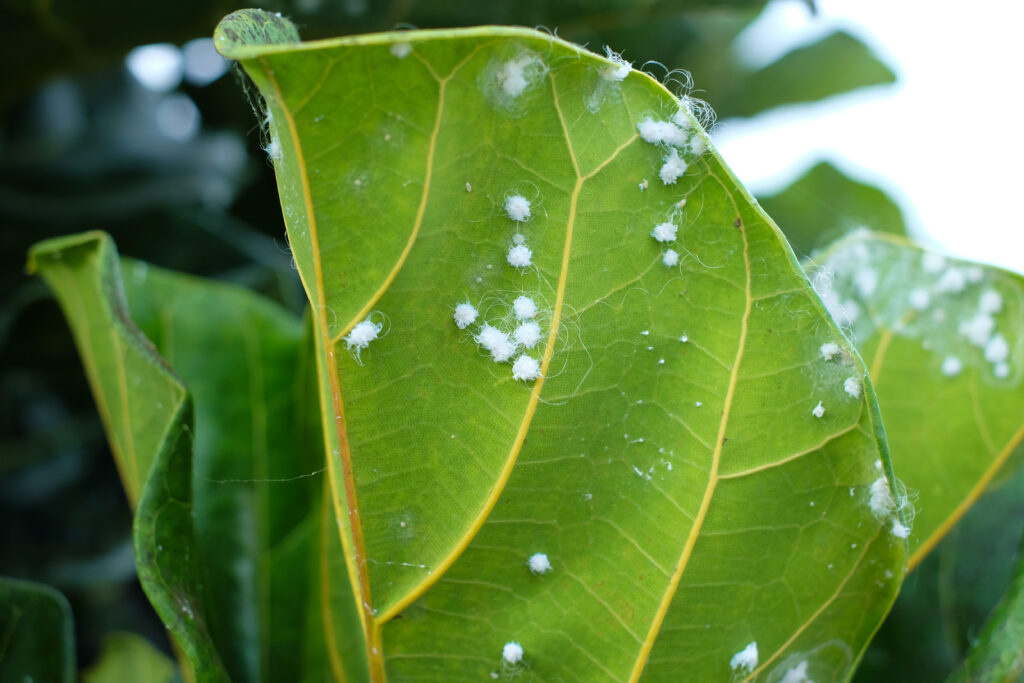
Aphids (pictured) can cause serious problems for quince bonsai trees if not noticed quickly.
©daguimagery/Shutterstock.com
Quince bonsai plants are susceptible to root rot and other problems from overwatering. Make sure the tree is planted in soil that drains effectively and let the soil somewhat dry out between waterings to avoid overwatering. If root rot does occur on the tree, cut out the afflicted roots and repot the tree in new, dryer soil.
The wrong amount of sun exposure might also cause issues. For optimum growth, quince bonsai plants require lots of sunshine. Move the tree to a more sunny spot if it isn’t getting enough sunshine, or use a grow lamp to offer more light.
There’s a lot to love about the quince bonsai tree. By following this care guide, your quince will grow into a large, stunning bonsai tree in no time!
Thank you for reading! Have some feedback for us? Contact the AZ Animals editorial team.

